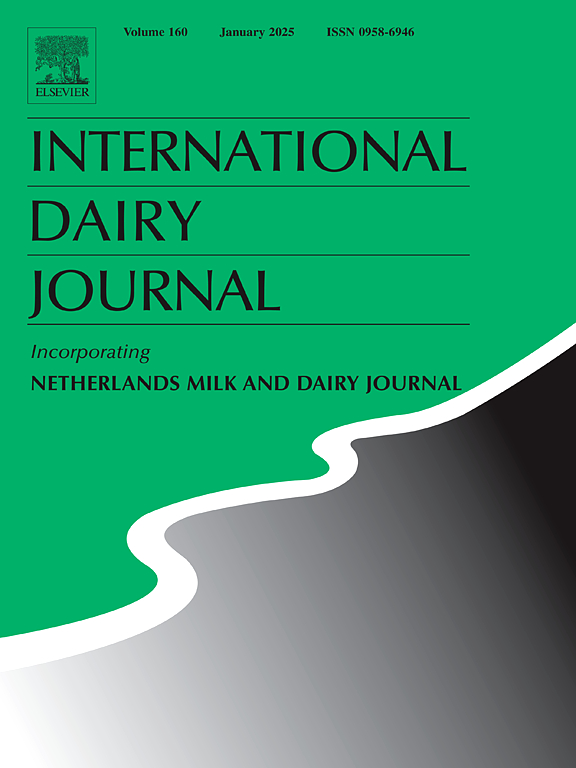Impact of different Cynara cardunculus L. extracts on the physicochemical, microbial, and sensory properties of Serpa cheese
IF 3.1
3区 农林科学
Q2 FOOD SCIENCE & TECHNOLOGY
引用次数: 0
Abstract
This study aimed to evaluate the impact of different Cynara cardunculus L. extracts on the physicochemical, microbial, and sensory properties of PDO Serpa cheese, including moisture content, texture, nitrogen fractions, fatty acid profile, microbial characteristics, and overall acceptance. Cheese samples were produced in two dairies (C and G) with three cardoon coagulants (J, C, and G) and analyzed at the beginning of ripening (0 days) and after 30 days.
Initially, all samples showed similar moisture, pH, titratable acidity, and trichloroacetic acid-soluble nitrogen (TCA-SN). After ripening, moisture decreased (1.78%–2.82%), with higher levels in cheeses made with cardoon J. Water activity declined more significantly in dairy G's samples, especially with cardoon J. pH and acidity decreased without notable differences between cardoon types or dairies. Nitrogen fractions stabilized after 30 days, indicating microbial activity as the key driver of proteolysis. Fatty acid analysis revealed palmitic, myristic, oleic, and capric acids as predominant, with dairy G's samples showing higher monounsaturated fatty acids (MUFA) and lower short-chain fatty acids, like butyric acid.
Principal Component Analysis (PCA) highlighted ripening time as the main factor influencing cheese characteristics and, at the end of the ripening process, samples were separated by factory. Microbial analysis showed increased mesophilic and lactic acid bacteria during ripening, while fungi and Enterobacteriaceae counts remained stable. Sensory evaluation indicated higher ratings for dairy G's cheeses in flavour and acceptance, regardless of cardoon type.
This study demonstrates how cardoon type and dairy practices shape cheese quality.
求助全文
约1分钟内获得全文
求助全文
来源期刊

International Dairy Journal
工程技术-食品科技
CiteScore
6.50
自引率
9.70%
发文量
200
审稿时长
49 days
期刊介绍:
The International Dairy Journal publishes significant advancements in dairy science and technology in the form of research articles and critical reviews that are of relevance to the broader international dairy community. Within this scope, research on the science and technology of milk and dairy products and the nutritional and health aspects of dairy foods are included; the journal pays particular attention to applied research and its interface with the dairy industry.
The journal''s coverage includes the following, where directly applicable to dairy science and technology:
• Chemistry and physico-chemical properties of milk constituents
• Microbiology, food safety, enzymology, biotechnology
• Processing and engineering
• Emulsion science, food structure, and texture
• Raw material quality and effect on relevant products
• Flavour and off-flavour development
• Technological functionality and applications of dairy ingredients
• Sensory and consumer sciences
• Nutrition and substantiation of human health implications of milk components or dairy products
International Dairy Journal does not publish papers related to milk production, animal health and other aspects of on-farm milk production unless there is a clear relationship to dairy technology, human health or final product quality.
 求助内容:
求助内容: 应助结果提醒方式:
应助结果提醒方式:


